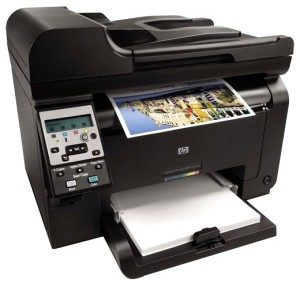 Plastic for 3D printer (filament) is hermetically packaged thermoplastic filament. Filaments of different chemical composition, so it is possible to create a final product very different functionality.
Plastic for 3D printer (filament) is hermetically packaged thermoplastic filament. Filaments of different chemical composition, so it is possible to create a final product very different functionality.
Plastics for the 3D printer
The content of the article
- Plastics for the 3D printer
- How to choose plastic for a 3D printer
- The best models of plastic
Conventionally, materials are divided into three groups:
- standard;
- flexible;
- Composite.
Standard plastic is easy to use and versatile physical properties. In this category are 6 species most sought after by users: PLA, ABS, Nylon, PET, ColorFabb nGen, ASA. They are used to create products with different indices of strength and service life in many industries. For example, PLA plastic made from disposable dishes for the food industry and surgical threads - for health.
Flexible plastic with properties similar to rubber. It is used for printing products with high flexibility. The best known of this group are TPE / RUBBER, TPU, FLEX.

Composite plastics can create unusual products with plastic properties. Serve as the basis of their standard filament PLA, ABS and others. Popular in this group LAYBRICK used for manufacturing products that mimic natural stone. Widely used in landscape design. By varying the temperature condition can be prepared surface of two types: smooth and rough.
A separate group of composites are exotic plastics, imitating wood, metal, electrically conductive, glow in the dark, changing color depending on the temperature.
Reference! Filaments for 3D printing are shown in the form of threads 1.75 mm in diameter and 3 mm in a wide range of colors.
How to choose plastic for a 3D printer
The plastic selected for its characteristics, ensuring properties of the final product:
- Strength. May vary depending on the species. Scored on a 4-point scale. Maximum strength (4) has, for example, polycarbonate PC. Minimum (1) - a flexible TPU, very flexible FPE.
- Flexibility. For the same 4-point scale, flexible plastics are (4), the minimum flexibility (1) can have at most durable types - Carbon, Ceramic, and average strength - PLA.
- Durability. Most of the materials have good durability in the range (3-4). The only exception is for printing Ceramic pottery with indicator (1).
- printing temperature. The value at which the material acquires the flexibility needed for extrusion. It depends on the feedstock chemical composition. It ranges from 180-260 ° C. Each printer model supports a certain temperature, which should be considered when choosing a plastic.
- temperature table for printing. Practically all kinds by rapid cooling undergo deformation (compress) so table for printing must be in a heated state to a temperature of 20-110 ° C depending on the type of yarn.
- The complexity of use. It may be low, medium and high. It depends on a combination of factors. Printing has low complexity PLA (no odor, it does not give strain can print without heating platform).
- Environmental Safety. It depends on the chemical composition. Considered safe materials based on renewable biological resources (waste corn, sugar cane) that require less energy consumption for extrusion. plastic processing based on petrochemical products more energy-intensive plus accompanied by unsafe fumes.

Reference! When choosing a plastic print 3d can be considered in addition: degree of shrinkage (deformation) under cooling, solubility, adhesion, transparency, and weatherability.
Selection is made by plastic analysis listed properties. For example, for the production of PLA phone covers with low flexibility does not fit, and filaments of the same group of ABS with an average flexibility and high strength is considered to be an excellent choice.
The best models of plastic
PLA (polylactic acid) - the most popular thread for today, which printing does not require special conditions. To work recommended temperature of 180-230 ° C, although the optimum is considered to be 210 ° C. Can work table without heating, under heating up to 20-60 ° C improves the adhesion of the platform. Best consumable material for 3D printing at home.
Reference! PLA is considered an ideal raw material for the manufacture of products with a minimum durability.
Main advantages:
- high quality prints;
- high-speed printing;
- no shrinkage (up to 1%);
- It is not soluble in alcohol and water.

Disadvantages:
- low strength (compared to ABS);
- strain with minimum effort;
- hygroscopic, which leads to the accumulation of moisture, which reduces the shelf life of products.
ABS (acrylonitrile butadiene styrene) - PLA until the lead on demand. It yielded due to more complex printing conditions - working temperature - 210-250 ° C, heating platform - 80-110 ° C. Plus the required slow cooling because of possible risk of distortion.
Benefits:
- long service life of products;
- resistance to shocks and high temperatures;
- good flexibility.
Reference! ABS is considered a universal material for the production of products subject to frequent assembly / disassembly, heating, falls (covers for phones, electrical appliances shell, Lego building blocks, bearings, helmets motorcycles).
Disadvantages:
- more complex printing;
- compression during cooling;
- harmful to humans evaporation when printing requiring room ventilation.
ColorFabb nGen - a good option for 3D printers, non-professionals. Prints at varying speed, even at a temperature of 260 ° C does not emit fumes, it has high heat resistance. Products are of beautiful appearance.

PET (polyethylene terephthalate) - the most widely used plastics in the world. In terms of strength it relates to the professional class. It has low complexity of use. It does not shrink, does not emit harmful fumes. Used for the production of containers, crates products for instruments of individual parts and housings.


